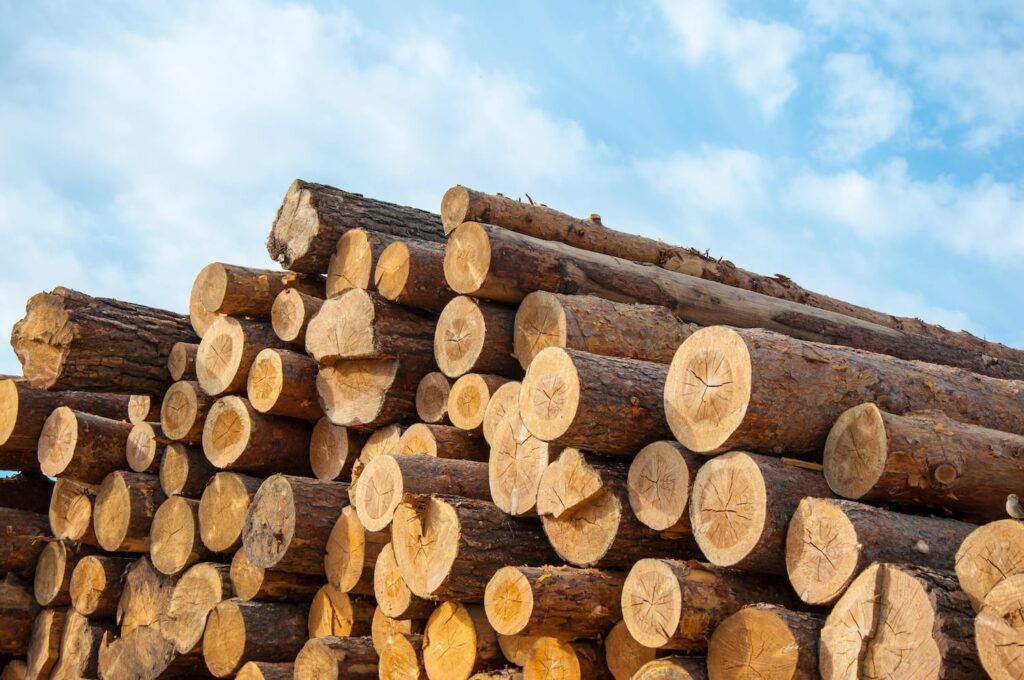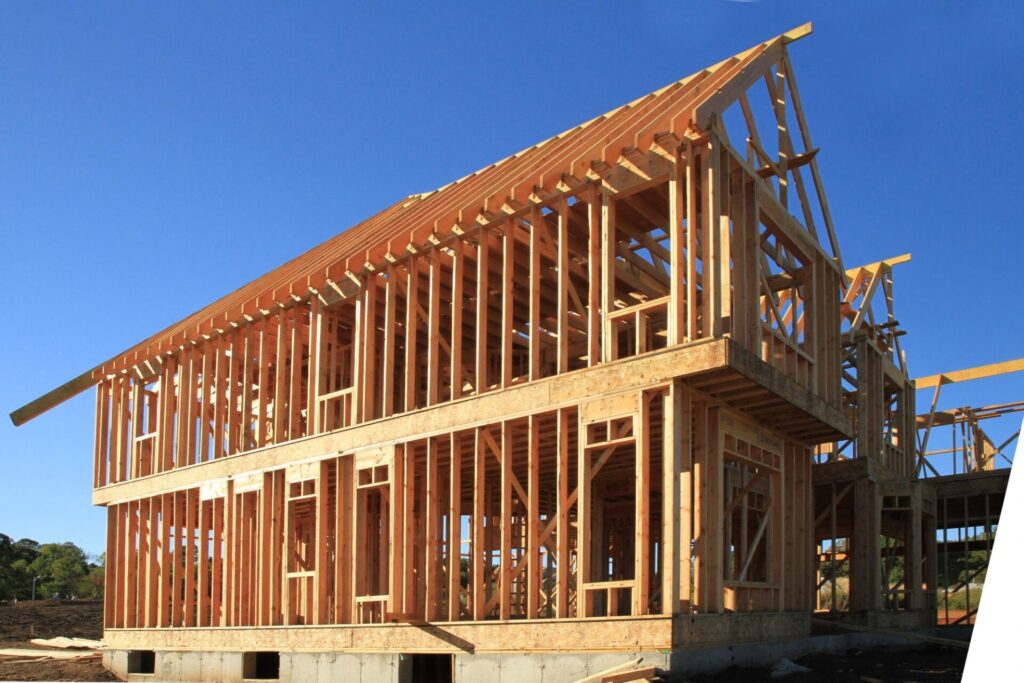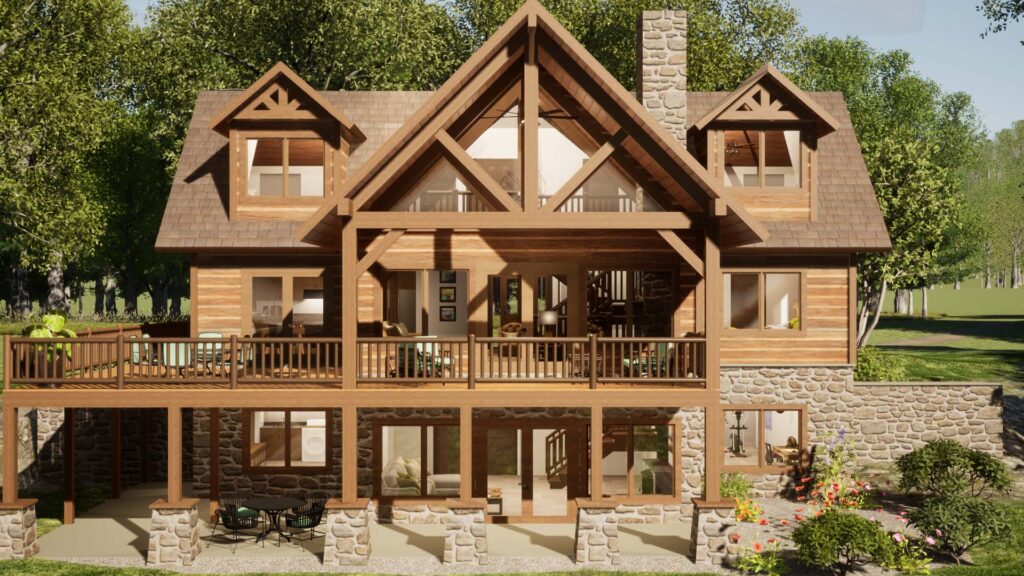Timber, a timeless and versatile building material, embarks on a fascinating journey from the heart of lush forests to the warmth of our homes. This journey, intricate and impactful, encompasses various stages that shape the timber into the very foundation of our living spaces. Let’s delve into the captivating process that transforms raw wood into the sturdy framework of wooden houses.
If you think you did not do the greatest job at building a timber house, you can contact the most professional Oakland home remodeling experts to transform your vision into a stunning reality, ensuring that every detail of your home reflects precision, craftsmanship, and unparalleled expertise.
Harvesting Timber: Nature’s Contribution to Construction

In the heart of dense woodlands, the process begins with the careful selection and harvesting of timber. Harvesting involves skilled loggers identifying mature trees suitable for construction purposes. Sustainable forestry practices ensure that only a fraction of the mature trees are felled, allowing the forest ecosystem to thrive. This intricate dance with nature requires a delicate balance, as loggers employ both traditional and modern techniques to extract the chosen trees without causing extensive environmental impact.
When it comes to electrical infrastructure within timber structures, the importance of reliable components cannot be overstated. In this context, bus bars play a vital role. These essential conductors ensure efficient power distribution throughout timber-built facilities, seamlessly integrating modern electrical systems with the timeless appeal of timber.
Once the trees are felled, they undergo meticulous processing, where the bark is stripped away, and the logs are cut into manageable lengths. This raw timber, now ready for transportation, carries within it the essence of the forest, waiting to be shaped into the structures that will become our homes.
Timber Mills: Crafting Nature’s Bounty into Building Blocks
The journey of timber progresses as the raw logs reach timber mills, bustling hubs of craftsmanship and technology. Here, the logs undergo a series of transformations that convert them into the building blocks of wooden houses. The milling process involves debarking, sawing, and planing, turning the raw timber into boards and beams with precise dimensions.
Skilled millworkers, armed with an understanding of wood’s grain and strength, orchestrate the machines that shape the timber, creating a foundation for high-quality roofing systems in Potomac MD. The result is a collection of construction-grade lumber, each piece carrying the unique character of the tree it originated from. This diversity in wood grain and texture adds a touch of natural artistry to the structural elements of a wooden home, ensuring that no two houses are alike in their visual appeal.
Drying and Treatment: Enhancing Durability for Generations
Once milled, the timber undergoes a crucial phase of drying and treatment. This step is essential to enhance the wood’s durability and stability, ensuring that the structures it supports withstand the test of time. Kiln drying, a common method, removes excess moisture from the wood, reducing the risk of warping or cracking. Additionally, timber is treated with preservatives to guard against pests and decay, further extending its lifespan.
This phase combines the precision of technology with the wisdom of age-old preservation techniques, marrying the modern demand for longevity with a commitment to sustainable practices. The treated timber emerges from this process robust and ready to weather the elements, guaranteeing that the homes it constructs will endure for generations.
Architectural Alchemy: Timber in the Design and Construction of Homes
With the prepared timber in hand, architects and builders engage in a unique form of alchemy as they shape the material into the homes we inhabit. Timber’s flexibility allows for a diverse range of architectural styles, from classic log cabins to modern eco-friendly structures. The construction phase involves assembling the timber components with meticulous attention to detail, creating a symphony of interconnected elements that form the skeleton of a house.
Much like the precision required to create a flawless walk cycle animation, the craftsmanship in timberwork demands attention to detail, enhancing the overall aesthetics of any structure.
Timber’s structural integrity, coupled with its aesthetic appeal, makes it an ideal choice for architects seeking to blend functionality with beauty. The use of timber in construction also aligns with contemporary sustainability goals, as wooden houses serve as carbon sinks, capturing and storing carbon dioxide for the duration of their existence.
The Final Touch: Timber Finishes and Interior Elegance
As the structure of the house takes shape, the journey of timber continues with the application of finishes that add both protection and visual allure. Exterior finishes, such as stains or paints, protect the timber from the elements while allowing homeowners to express their personal style. Internally, timber contributes to the cozy ambiance of a home, whether as exposed beams, hardwood floors, or custom carpentry.
The final touch involves the installation of doors, windows, and other fixtures, seamlessly integrating the timber framework with the functional and aesthetic elements of the home’s interior. This stage of the journey transforms a mere construction material into an integral part of the living space, creating an environment that is not only structurally sound but also visually captivating.
While the strength and versatility of timber have long been harnessed in construction projects, the resilience and adaptability of dermal fillers in the beauty industry mirror the enduring qualities of this natural material.
Embracing Innovation: Timber in the Age of Sustainable Construction

In the ever-evolving landscape of construction, the journey of timber takes a forward leap into the realm of innovation and sustainability. Architects and builders, cognizant of the environmental impact of construction materials, are exploring cutting-edge techniques to enhance the eco-friendliness of wooden houses. Engineered wood products, such as cross-laminated timber (CLT) and glue-laminated timber (glulam), represent a modern chapter in the use of timber for construction.
Cross-laminated timber, composed of layers of wood stacked at right angles and bonded together, provides exceptional strength and stability. This innovation allows for the construction of taller wooden structures, opening new possibilities for high-rise buildings with a reduced carbon footprint. Glue-laminated timber, on the other hand, offers versatility in design with its ability to be curved and shaped, enabling architects to push the boundaries of creativity in wooden architecture.
As we witness these advancements, the journey of timber becomes a testament to the marriage of tradition and innovation. Sustainable construction practices not only preserve the beauty of our natural surroundings but also position timber as a frontrunner in the race towards a more environmentally conscious future. Furthermore, partnering with a reputable branded merchandise supplier can amplify the promotion of eco-friendly timber products, fostering a harmonious blend of sustainability and market appeal.
The Art of Preservation: Timber in Heritage Restoration
Beyond the construction of new homes, timber plays a crucial role in the restoration of heritage structures. Many historical buildings, with their intricate wooden details and architectural charm, require delicate care to preserve their legacy. Skilled craftsmen, armed with an understanding of traditional joinery and woodworking techniques, work tirelessly to repair and replace damaged timber elements, breathing new life into structures that stand as witnesses to the passage of time.
The restoration process involves a meticulous assessment of the original construction methods and materials, ensuring that the essence of the historical structure is retained. In some cases, old-growth timber, renowned for its density and durability, is sourced to match the characteristics of the original wood. This marriage of old-world craftsmanship and timber’s timeless appeal ensures that heritage buildings continue to grace our modern landscapes, telling stories of bygone eras in the language of wood. Ensure your timber choices are as versatile and reliable as a trusted baby water bottle, providing the essential nourishment needed for your projects to flourish.
Timber in the Digital Age: Precision and Prefabrication
In the era of digital technology, the journey of timber takes a leap into the realm of precision and efficiency. Computer-aided design (CAD) and advanced manufacturing techniques allow for the precise fabrication of timber components, reducing waste and optimizing the use of raw materials. Prefabrication, the assembly of building components off-site, emerges as a game-changer in the construction industry, streamlining the building process and minimizing on-site disruptions.
Prefabricated timber elements, crafted with millimeter precision, arrive at construction sites ready for assembly. This not only accelerates the construction timeline but also ensures a higher level of quality control. The efficiency gained through digital design and prefabrication showcases timber’s adaptability to contemporary construction methods, positioning it as a material that seamlessly integrates tradition with the demands of the digital age. Colorado shutters, a versatile addition to modern architectural aesthetics, can be seamlessly incorporated into these prefabricated structures, further enhancing their visual appeal and functionality.
Global Perspectives: Timber in Architectural Diversity
The journey of timber extends beyond regional boundaries, influencing architectural styles across the globe. From the log cabins of North America to the traditional timber-framed houses of Japan, each culture brings its unique touch to the use of timber in construction. The global exchange of architectural ideas and practices has led to a rich tapestry of wooden structures that reflect the diversity of human creativity and the adaptability of timber as a building material. For easier travel to your timber-made cabin in the forest, you can utilize the best adult scooter.
In Scandinavia, for instance, timber is not only used for structural elements but also plays a central role in the design aesthetics of interiors. Exposed wooden beams and surfaces contribute to the cozy and inviting atmosphere of Nordic homes. In contrast, the intricate wooden latticework seen in traditional Chinese architecture showcases timber’s ability to be transformed into ornate and decorative elements.
As architects draw inspiration from different corners of the world, the journey of timber becomes a cultural bridge, connecting communities and fostering a global dialogue on the sustainable and aesthetic possibilities of wooden construction.
If a water heater is not working properly in your custom-made timber cottage, you should contact the best water heater replacement to fix it or replace with a new one for a competitive price.
Timber for the Future: Navigating Challenges and Opportunities

While the journey of timber has been marked by innovation and sustainability, it also faces challenges that demand careful consideration. Issues such as deforestation, illegal logging, and the environmental impact of timber production call for responsible forestry practices and stringent regulations. The industry’s response to these challenges will shape the future of timber as a sustainable and ethical construction material.
Emerging technologies, such as blockchain, are being explored to trace the origin of timber and ensure its legality and sustainability. By providing transparent and immutable records of the timber supply chain, these technologies aim to curb illegal logging and promote responsible forest management.
Moreover, the integration of smart technologies in wooden homes, such as sensors for monitoring structural integrity and energy efficiency, opens new avenues for enhancing the functionality and sustainability of timber constructions. The journey of timber in the future, including the implementation of advanced features like window shutters in Utah, will be characterized by a commitment to environmental stewardship, technological innovation, and a harmonious relationship between nature and construction.
Timber’s Enduring Legacy: A Call to Appreciate Nature’s Gift
As we reflect on the expansive journey of timber from forest to home, it becomes evident that this age-old material carries more than just the weight of structures. Timber embodies a connection to nature, a commitment to sustainability, and a celebration of human ingenuity. From the hands of loggers in the forest to the minds of architects shaping our skylines, timber weaves a narrative that transcends time and trends.
In our pursuit of innovative construction materials and methods, let us not forget the enduring legacy of timber—a material that has been with us through the ages, sheltering us and grounding us in the natural world. As we continue to build the homes of tomorrow, may we do so with a deep appreciation for the journey of timber, recognizing it not just as a construction material but as a gift from nature that deserves our utmost respect and care. If you live in Scranton, are not satisfied with your current living environment, and wish to move to a timber house in the countryside; you can sell your home easily for a great price because we buy mobile homes in Scranton PA.
